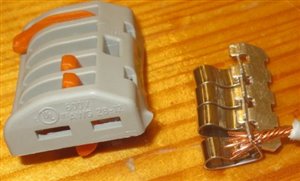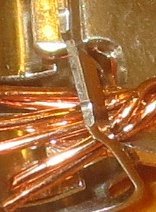Hi
I find myself using the lever 221 wago’s more and more now mainly for lighting circuits but have a question regarding conductor preparation prior to insertion in the wago once the required amount of insulation is stripped off. A solid conductor seems to just go straight in but do you twist a stranded cable and a flexible cable or put them in untwisted? I can’t find any guidance on the box or on the wago website. What do other users of these great little inventions do with them?
Thanks


